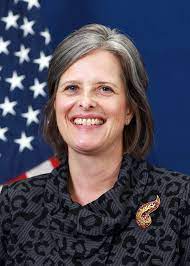WASHINGTON, DC — Despite the VA’s claims of an integrated, veteran-first model of healthcare, its patients regularly find themselves lost in a landscape of complex, siloed treatment that they are left to navigate for themselves. The challenge for patients only increases when community care is added to the equation, and they cannot rely on the consistent sharing of their records between VA and a private healthcare system.
VA officials testified last month that the department is working to solve these problems and create a framework that integrates all parts of a patient’s care. According to patient advocates, a previous model—the Federal Recovery Coordinator Program (FRCP)—accomplished this but has been all but discarded.
“VA’s patient-aligned care team (PACT) model should provide personalized patient-driven care and positively can impact the patient’s experience in the patient care setting. However, high-need, high-risk veterans often need support for their complex psychosocial needs beyond that setting,” explained Rep. Marionette Miller-Meeks (R-IA), chair of the House Veterans Affairs Subcommittee on Health. “This is not due to a lack of compassionate coordinators and social workers at VA, but rather a lack of poorly defined roles for these advocates.”
Rather than have no care coordination managers, patients can find themselves with multiple coordinators arranging different aspects of their care—professionals who do not always liaise with each other, she noted.
In 2016, VA launched the Care Coordination and Integrated Case Management Initiative (CCICM), a partnership between the VA Offices of Case Management and Social Work, and Nursing Services, with the goal of standardizing and integrating care coordination across the system. It’s meant to provide a long-term strategy to ensure that all veterans across the continuum of care receive the best care in the quickest possible timeframe.
“So, within VA there are multiple programs, and care coordinators within those multiple programs,” explained Jennifer Strawn, DNP, RN, VA’s deputy chief nursing officer. “A veteran who may suffer from chronic medical conditions, may also have mental health issues, may have social determinant of health issues—those patients or veterans may have multiple case managers. And what we have found is that there may be siloing and fragmentation. With the new CCICM framework, a veteran who needs moderate or complex care coordination will have an assigned lead coordinator and that coordinator will assist them internal and external to VA to navigate the healthcare system.”
To some veteran advocates, it sounds as if VA is trying to reinvent something that already exists—or at least used to. Andrea Sawyer appeared before the subcommittee as the Advocacy director for the Quality of Life Foundation, a nonprofit whose goal is to assist wounded veterans and their caregivers, but also spoke about her experience as the caregiver of a wounded veteran.
“Back in 2006 and 2007, I had a bazillion case managers on the DoD side. VA just added more to the layers. Everybody’s talking past each other,” she explained. “Originally the person managing those was me until we met up with the head of the newly stood up Federal Recovery Care Coordination Program, and I managed to get a case manager for my case managers.”
That coordinator had authority across DoD, VA and CMS and was able to cut through the red tape, Sawyer said.
“The FRC program has rolled down over the years,” she noted. “They became a consultant. Then a consultant for just the facility. … As an organization, we can refer people to the program, [and] they’ll look through the patient’s record and engage the facility. … It used to be a robust program. They just don’t exist like they did.”
Matt Brady, director of the Wounded Warrior Project, agreed.
“When it was in full implementation, the FRC had great latitude to really execute the plan for the warrior,” he said. “It was going to go, not just in the DoD, but VHA, VBA, and the Social Security Administration. They had this incredible amount on latitude in which to work really centered on the injured veteran. I think the problem with that is we’ve gotten away from it, and now we’re at a level where there’s no direct interaction. There’s not the direct care in developing the care plan with the veteran.”
These difficulties in coordinating patient care have gotten more complex in recent years due to the sharp increase in the use of community care by veterans. According to VA’s Office of Inspector General (OIG), community providers regularly fail to send patient records back to VA, resulting in miscommunications that can lead to delays in diagnosis and treatment and widespread quality of care concerns.
This record-sharing system is frequently dependent on the private provider sending records by fax, not only making it difficult to confirm receipt, but then requiring VA to input data into a patient’s file manually.
“Technology is really the solution here,” declared Sachin Yende, MD, MS, chief medical officer of VA’s Office of Integrated Care. “Trying to work through faxes, trying to make sure those faxes get into medical records, is a very laborious process. So we’re exploring some technology solutions out there.”
Julie Kroviak, MD, VA deputy assistant inspector general, agreed with Yende’s diagnosis, but not his optimism that VA is close to a solution.
“[Problems with medical records and lack of culpability] is absolutely impacting care for veterans,” she said. “It’s not getting better according to our work. I do believe technology is the solution, but I don’t believe we’re anywhere near making that solution a reality.”


